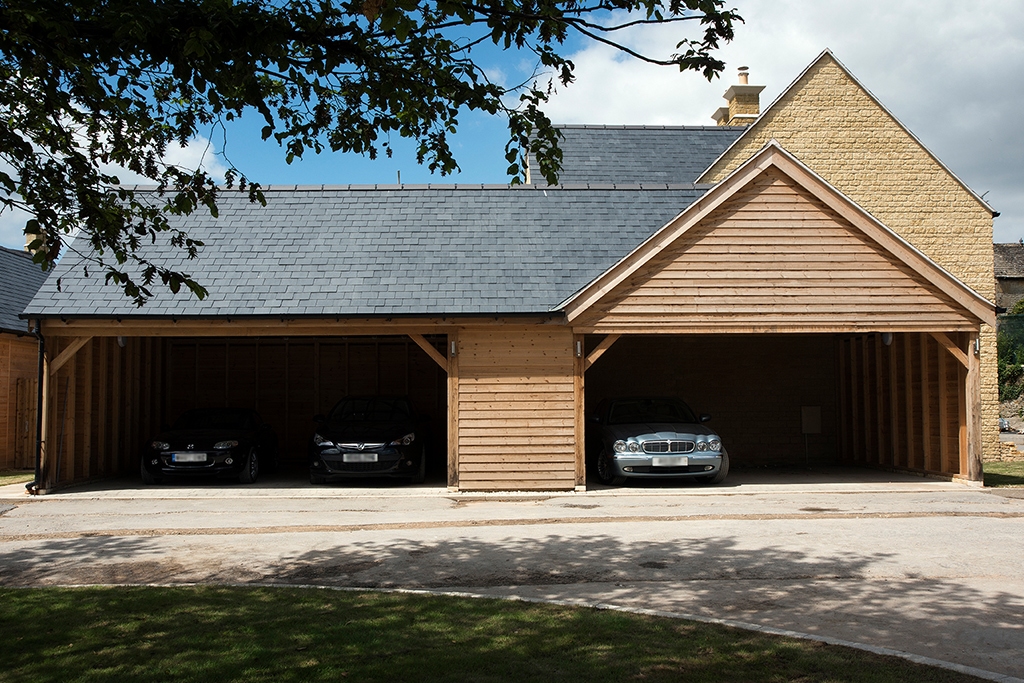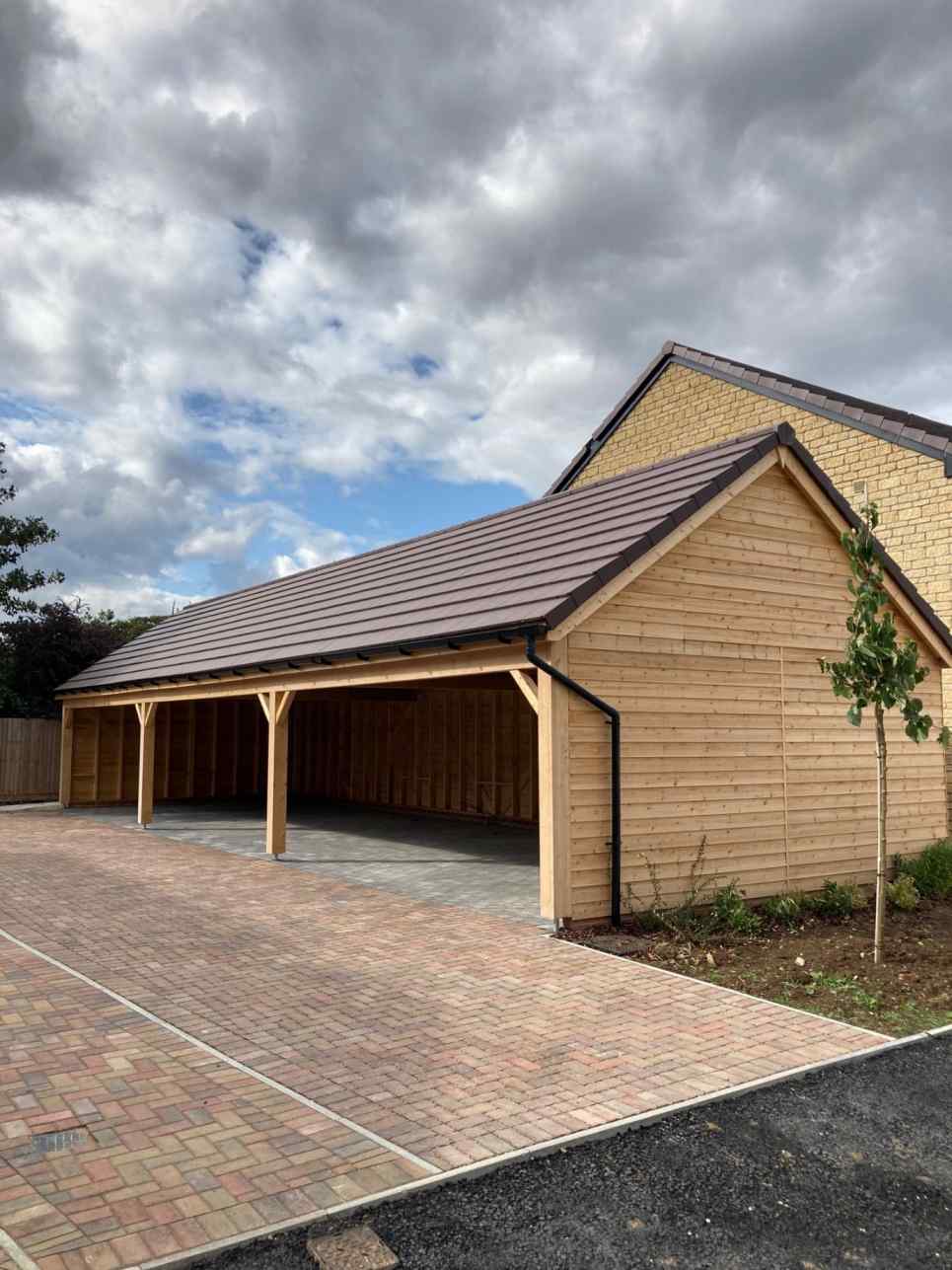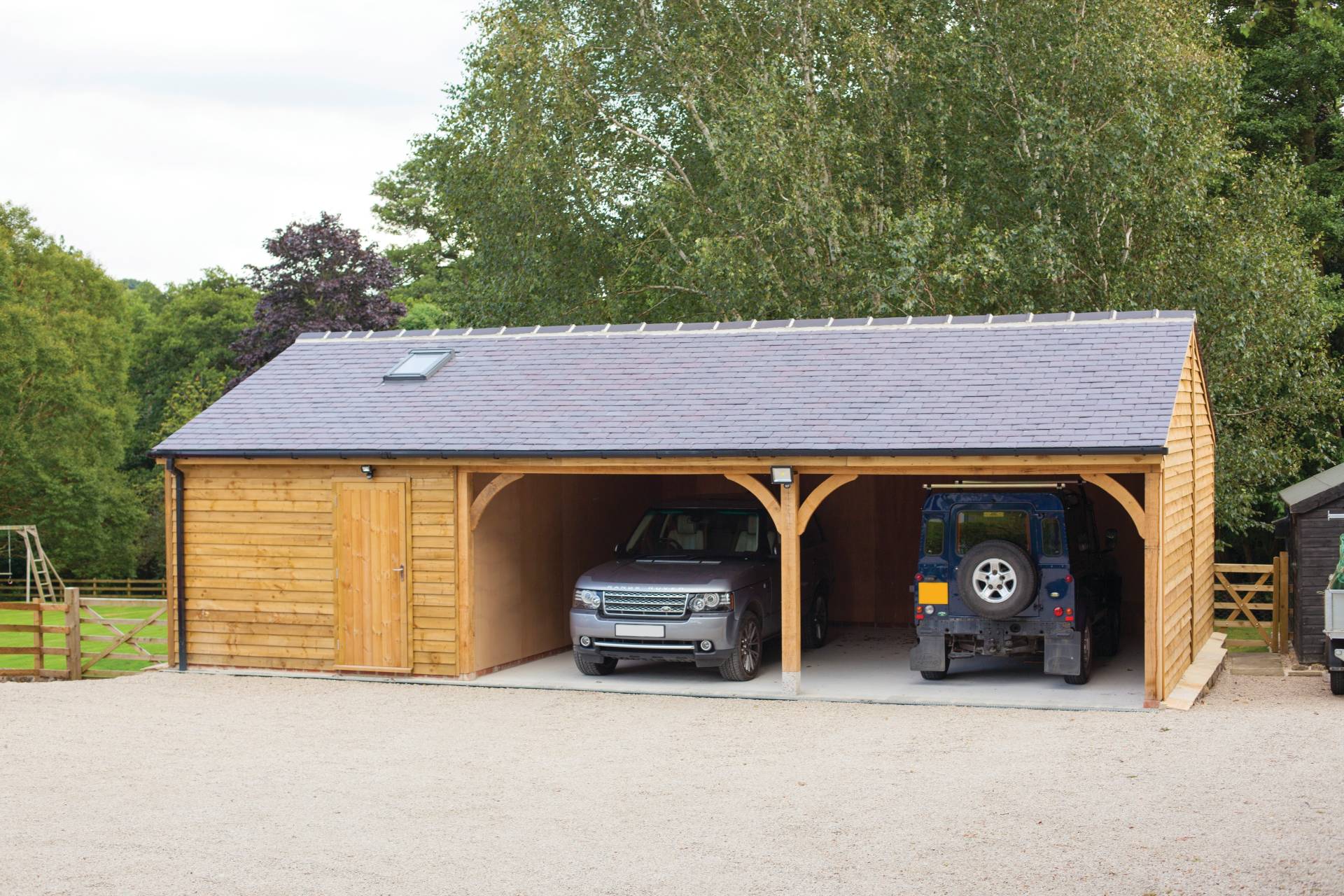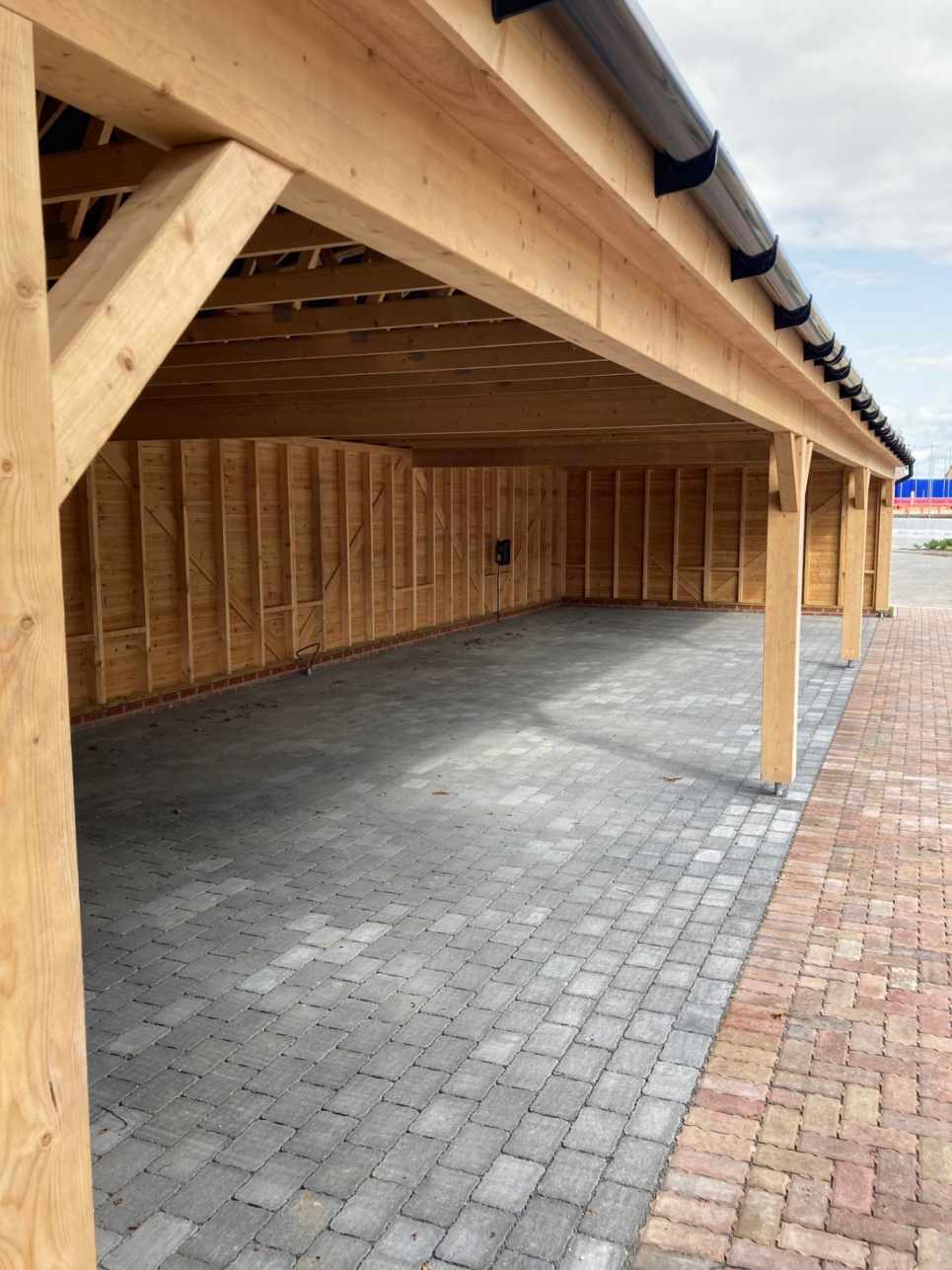Car barns and new homes: the five most commonly asked questions
Timber car barns, also known as timber frame car barns or carports, are an excellent option for housebuilders who want a more stylish and versatile product for new homebuyers than the traditional, and dare we say it, boring brick garage.
Car barns offer protection from the weather for all sorts of vehicles and can help preserve their condition, as well as making it easier and more comfortable for passengers to use cars in bad weather. They can also be a very cost-effective way to add value to a new home.
There is a growing trend among quality housebuilders opting for timber carports or oak-fronted timber garages over traditional brick garages. This trend shows no signs of slowing down as these attractive structures set their homes apart from the competition and enhance their aesthetic appeal, their sustainability credentials, and overall value for homeowners.
In this article, we will answer the top five questions that we are asked about car barns.
-
What are the main advantages of timber car barns?
One of the main advantages of timber car barns is their lower-carbon credentials, as well as their classic and timeless aesthetic, adding a touch of rustic charm to any property. Wood is a beautiful, tactile and naturally renewable construction material. Using more wood in construction helps to lock up carbon from the atmosphere – as a rule of thumb, each cubic metre of wood from a responsibly-managed forest (such as PEFC timber) can absorb around a tonne of CO2 from the atmosphere.
Timber car barns are also an ideal solution for tricky sites. Because they typically weigh about 20% less than concrete block and brick structures, builders don’t need to put in massive concrete foundations or expensive steel sections. This also brings big carbon-busting benefits.
Timber barn structures are strong and durable, built to last, withstanding harsh weather conditions and other environmental factors. They are also highly versatile, customisable to accommodate multiple vehicles, including cars, trucks and boats, and can include additional storage space for tools, equipment and other items.
-
What level of maintenance is necessary for a timber car barn?
The maintenance requirements for timber car barns are relatively low. These structures are constructed using traditional timber frame methods, involving large wooden beams and posts to create a sturdy framework. Any external timber cladding is also treated to resist fire, rot and pests, and to promote a long life of at least 25 years.
Homeowners should look after their timber car barns just as they would care for other timber features in their new home, such as wood windows and garden decking. Inspect the timber for any signs of damage or wear, and re-apply a protective finish to the wood at regular intervals. Periodic cleaning can also help keep the timber in optimal condition, and it will be important to keep guttering and drainpipes debris-free to prevent long-term water damage.
-
How long does it take to build a timber car barn?
The timeline for constructing a timber car barn depends on various factors, including the size and complexity of the structure, the availability of materials, the weather conditions and what else is happening on site.
However, timber frame car barns are typically quicker to build than masonry structures as much of the structure can be made to measure off-site and delivered ready for assembly. On average, it can take anywhere from a few days to a few weeks to complete a timber car barn, depending on the project scope and installation timescales.
Scotts Timber Engineering’s prefabricated timber car barns are assembled off-site, reducing installation time by up to 50% compared to traditional brick garage construction.
-
Are timber car barns energy efficient?
Timber car barns can be designed to be highly energy efficient. This involves insulating the walls, roof and floor. Insulation helps to regulate the temperature inside the car barn, saving on potential heating costs and creating a healthy optimum environment for storage.
Working with a knowledgeable fabricator and installer is essential for ensuring proper insulation and energy-efficient features are included in the design.
-
Compared to other car storage options, are timber car barns more expensive?
Timber car barns may involve higher upfront costs than other car storage options. However, they do offer better long-term value due to the premium they add to a new home, and because of their durability and versatility.
These impressive structures are widely recognised by major housebuilders and their customers as a high-quality investment that can increase a property’s value and provide a unique and attractive storage solution for vehicles and other belongings. The cost of a timber car barn can vary widely depending on size, design, location and customisation options.
Whether you are a housing developer or a self-builder looking to incorporate a timber car barn into your property, ensure you are getting the best quote for your project.
At Scotts Timber Engineering, we work closely with our clients to fully understand their requirements.



